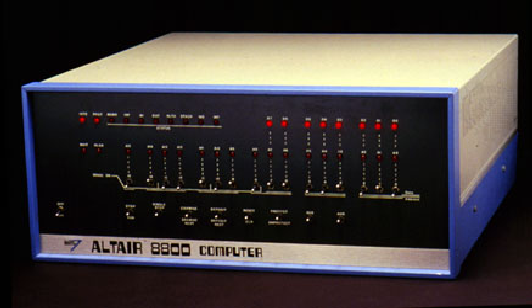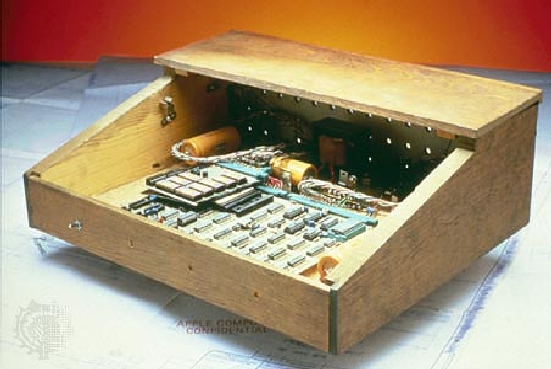
- •М.В. Жесткова, с.Я. Никитина
- •Самара 2007
- •Contents
- •Grammar review
- •To have
- •In the computer room
- •Grammar review
- •The internet
- •Computers in our life
- •Common computer applications
- •Computer applications on railways
- •Grammar review
- •What is a computer?
- •Types of computers
- •Микрокомпьютер
- •Мейнфрейм
- •Analog and digital computers
- •Grammar review
- •Hardware
- •(1) The Central Processing Unit
- •(2) Storage Devices
- •Internal Memory
- •(3) Input Devices
- •(4) Output Devices
- •The definition of mechanical brain
- •Grammar review
- •Software
- •(A) програмmное обеспечение компьютера
- •(B) популярные операционные системы windows
- •Macintosh
- •(1) Introduction
- •(2) Early Efforts
- •(3) Video Games
- •(4) Nintendo And Competitors
- •(5) Computer Games
- •(6) Advantages of Computer Games
- •(7) Popular Computer Games
- •Grammar review
- •Part I (Prehistory)
- •Part II (The Computer of the 19th Century)
- •As far as I know; In fact; It is hard to say; To my mind; In my opinion I believe; I suppose.
- •(1) Charles babbage
- •(2) Augusta ada king, countess of lovelace
- •Grammar review
- •Babbage's dream come true Part I (The Harvard Mark I)
- •Part II (colossus, eniac, edvac)
- •Computerland
- •Grammar review
- •Deep blue
- •The pc revolution Part I
- •Part III
- •People who changed the computer world Part I
- •Part II
- •Part III
- •Part IV
- •Наступление персональных компьютеров
- •Enjoy yourself
- •(2) Mother should have warned you!
- •(3) Bill gates in heaven
- •(4) 10 Programmers
- •(5) What if dr. Suess wrote a manual?
- •How modern are you?
- •Add up your score and read the analysis.
- •Add up your score and read the analysis.
- •Краткий грамматический справочник
- •§ 1. Личные и притяжательные местоимения Personal and Possessive Pronouns
- •§ 2. Глагол to be
- •§ 3. Глагол to have
- •§ 5. Притяжательный падеж имени существительного (Possessive Case)
- •§ 6. Существительное в функции определения (Noun as Attributive)
- •§ 7. Степени сравнения прилагательных и наречий (Comparison Degrees of Adjectives and Adverbs)
- •§ 8. Основные формы глагола
- •§ 9. Времена групп Indefinite, Continuous, Perfect в действительном (Active) и страдательном (Passive) залогах
- •Tenses in Active Voice
- •Tenses in Passive Voice
- •§ 10. Согласование времён (Sequence of Tenses)
- •§ 11. Модальные глаголы (Modal Verbs)
- •§ 12. Эквиваленты модальных глаголов (Equivalents of Modal Verbs)
- •§ 13. Причастие (The Participle)
- •Participle I
- •Participle II
- •§ 14. Герундий (The Gerund)
- •§ 15. Функции слов с окончанием -ing в предложении
- •§ 16. Функции слов с окончанием -ed в предложении
- •§ 17. Инфинитив (The Infinitive)
- •§ 18. Функции глагола to be
- •§ 19. Функции глагола to have
- •§ 20. Порядок слов в утвердительных предложениях
- •§ 21. Порядок слов в вопросительных предложениях
- •§ 22. Порядок слов в отрицательных предложениях
- •§ 23. Условные придаточные предложения (Conditional Sentences)
- •§ 24. Наиболее распространенные служебные слова
- •Библиографический список
The pc revolution Part I
Two technical innovations in the field of microelectronics – the integrated circuit (1959) and the microprocessor (1971) – resulted in creating microcomputers. The IC permitted the miniaturization of computer memory circuits, and the microprocessor reduced the size of a computer's CPU to the size of a single silicon chip.
The first desktop computer designed specially for personal use was called the Altair 8800. (See Figure 1) It was developed by a small firm named Micro Instrumentation Telemetry Systems in 1975. The Altair was a blue, box-shaped machine that measured approximately 43 cm by 46 cm by 18 cm. There was no keyboard, video terminal, paper-tape reader, or printer. The Altair used an 8-bit Intel 8080 microprocessor, had 256 bytes of RAM. Commands, or programs, were input by flipping the switches on the front panel of the machine. A pattern of flashing lights on this panel showed the results of a program.
T hough
the Altair was popular amongcomputer
hobbyists, its commercial application was limited, since buyers had
to assemble the machine from a computer
kit1.
The kit contained all of the components necessary to build an Altair
computer: a box, a CPU board with 256 bytes of memory, and a front
panel. It was sold for $397, barely more than the cost of the Intel
8080 microprocessor that it used. It took an electronics expert many
hours to assemble the computer.
hough
the Altair was popular amongcomputer
hobbyists, its commercial application was limited, since buyers had
to assemble the machine from a computer
kit1.
The kit contained all of the components necessary to build an Altair
computer: a box, a CPU board with 256 bytes of memory, and a front
panel. It was sold for $397, barely more than the cost of the Intel
8080 microprocessor that it used. It took an electronics expert many
hours to assemble the computer.
Figure 1
An assembled Altair 8800 microcomputer (1975)
T he
Altair hardly represented a revolutionary invention, but it
encouraged computer experts to take the next step. Thepersonal
computer
industry actually began in 1977, when Apple Computer,
Inc., founded by Steven Jobs and Stephen Wozniak, introduced the
Apple II. (See Figure 2) It
was one of the first pre-assembled, mass-produced personal
computers.
Its monitor supported relatively high-quality color graphics. The
computer had its
own keyboard,
power
supply, a
floppy-disk drive and
eight slots for peripheral devices, which gave users wide
possibilities for add-on devices and software programs. The
machine used 8-bit microprocessors (which process information in
groups of 8 binary digits at a time) and had rather limited memory
capacity.
he
Altair hardly represented a revolutionary invention, but it
encouraged computer experts to take the next step. Thepersonal
computer
industry actually began in 1977, when Apple Computer,
Inc., founded by Steven Jobs and Stephen Wozniak, introduced the
Apple II. (See Figure 2) It
was one of the first pre-assembled, mass-produced personal
computers.
Its monitor supported relatively high-quality color graphics. The
computer had its
own keyboard,
power
supply, a
floppy-disk drive and
eight slots for peripheral devices, which gave users wide
possibilities for add-on devices and software programs. The
machine used 8-bit microprocessors (which process information in
groups of 8 binary digits at a time) and had rather limited memory
capacity.
Figure 2
The original Apple II Computer
The Apple II initially was used mainly for running video games. Its popularity considerably increased when Daniel Bricklin wrote a program called VisiCalc – the first electronic spreadsheet (computerized accounting program). Other types of application software were soon developed for PCs. Because personal computers were much less expensive than mainframes, they could be bought by individuals, small and medium-sized businesses, as well as by primary and secondary schools. The era of personal computing began in earnest2.
Part II
The IBM Corporation, the world's dominant computer maker, entered the new market in 1981, when it introduced the IBM Personal Computer. The IBM PC was only slightly faster than other desktop machines, but it had about 10 times their memory capacity. The IBM PC had one or two floppy disk drives and a color monitor. Intel Corporation's 16-bit 8088 microprocessor was selected as the CPU for the computer, and for software IBM turned to Microsoft Corporation. Until then, the small software company had concentrated mostly on computer languages, but Bill Gates and Paul Allen found it impossible to miss this opportunity. They bought a small operating system from another company and turned it into PC-DOS (or MS-DOS, or just DOS, for disk operating system). The IBM PC became the world's most popular personal computer, and both its microprocessor and its operating system became industry standards.
In 1982, a firm called Compaq Computer Corp. introduced a portable computer that was compatible with the IBM PC. These first portables resembled sewing machines when they were closed and weighed about 13 kg – at that time a true lightweight. Compatibility with the IBM PC meant that any software or peripherals, such as printers, developed for use with the IBM PC could also work on the Compaq portable. The machine was immediately in demand.
Compaq was not only successful but showed other firms how to compete with IBM. Quickly thereafter, many computer firms began offering IBM PC clones3. Rival machines that used Intel microprocessors and MS-DOS became known as “IBM compatibles” if they tried to compete with IBM on the basis of greater computing power or memory and “IBM clones” if they competed simply on the basis of low price.
I n
1983, Apple introduced Lisa, the first personal computerwith
a graphical user interface. The Lisa's GUI made computers easy and
fun to use and eliminated the need to type in complex commands. The
Lisa was followed by the famous Macintosh PC,
which was developed in 1984 and proved extremely successful. (See
Figure 3) It
was based
on the 68000 microprocessor manufactured by Motorola. The
Macintosh was particularly useful for desktop publishing because it
could lay out text and graphics on the display screen, as they would
appear on the printed page.
n
1983, Apple introduced Lisa, the first personal computerwith
a graphical user interface. The Lisa's GUI made computers easy and
fun to use and eliminated the need to type in complex commands. The
Lisa was followed by the famous Macintosh PC,
which was developed in 1984 and proved extremely successful. (See
Figure 3) It
was based
on the 68000 microprocessor manufactured by Motorola. The
Macintosh was particularly useful for desktop publishing because it
could lay out text and graphics on the display screen, as they would
appear on the printed page.
Figure 3
Apple Macintosh Computer
The Macintosh's GUI style was widely adapted by other hardware and software manufactures. In 1985, the Microsoft Corporation introduced Microsoft Windows – a graphical user interface that gave MS-DOS–based computers many of the same capabilities of the Macintosh. Windows became the dominant operating environment for personal computers.
